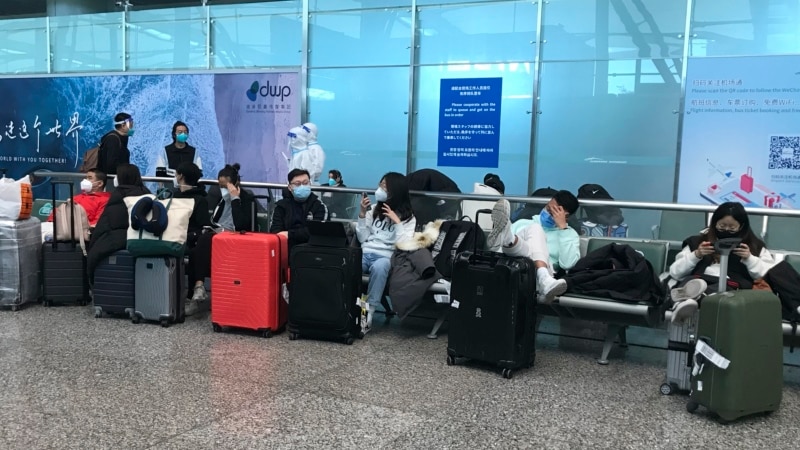Federal health officials have announced that, because of the surge in coronavirus cases in China, nearly all airline passengers from the country will have to provide proof of a negative COVID-19 test to enter the United States starting January 5. The only exceptions will be those younger than age 2.
The U.S. move follows similar actions taken by India, Italy, Japan and Taiwan.
The restrictions being imposed by the United States will apply to people traveling from mainland China, Hong Kong and Macau, including those continuing to other destinations.
“The United States is taking proactive steps to protect Americans’ public health and to be on alert for potential COVID-19 variants emerging,” said a federal health official who cited a lack of adequate and transparent data provided by China.
“There’s limited visibility about genomic sequencing data, about circulating variants in China on global databases. Additionally, testing and reporting of new cases is also diminished. Based on this lack of available data, it’s harder for us public health officials to identify new variants spreading to the United States,” the official told reporters on a conference call Wednesday. Ground rules for the briefing required that the official’s name not be used.
The U.S. action is entirely warranted, according to Lawrence Gostin, director of the World Health Organization Collaborating Center on National and Global Health Law. “China has experienced explosive spread of COVID, which fully justifies the U.S. response. China can hardly complain because the government has conducted far harsher travel restrictions into China for nearly three years, including intrusive quarantines.”
Gostin told VOA that the U.S. Centers for Disease Control and Prevention (CDC) “should have gone further by requiring a negative test within 24 hours of departure from China and its testing requirement should have applied to children under two years of age.”
Gostin added the CDC should also have imposed the testing requirement effective immediately, rather than waiting until January 5.
“We know from past experience that setting a date so far in advance could let in a flood of visitors who are not vetted,” he said. “Now that the U.S. has entered into a new non-emergency phase of the pandemic, it is wise to take precautions.”
The U.S. action is reasonable but how “to implement the measure consistently, especially for travelers transferring from a third country, will be challenging as many countries have not followed suit,” cautioned Xi Chen, an associate professor of public health at the Yale University School of Public Health. “Another point is that we don’t want this to fuel any anti-Asian racism and xenophobia.”
Others view the move by Washington as being more political than preventative.
“I don’t believe this measure is going to have anything but a marginal effect as it’s not as if COVID is not also highly prevalent in the U.S. One need not travel to China to contract COVID. It would be better to recommend people test post-travel to China than to require it,” Amesh Adalja, a senior scholar at the Johns Hopkins Center for Health Security, told VOA.
The United States has offered China vaccines, as well as other support for dealing with COVID-19.
“Beijing has indicated publicly that they appreciate the offer, but that they don’t need the support at this time. So, we will continue to stand by our offer,” a second federal health official told reporters on Wednesday’s call.
Jorge Agobian and Yang Lin contributed to his report.

